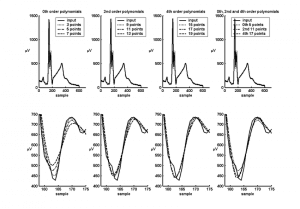Signal processing is the name of the game that must be played in order to do image processing. Image processing is such a fascinating subject that I am excited to expand upon it. It has amazing cross sectionality within various fields such as metrology, 3D printing, biomedical industries, and any industry that uses imaging as its main technology. Today we will be taking a look into inverse filtering as a specific method within signal processing. Signal processing is a general domain of expertise that can be applied in different settings. For the purposes of where we are in our metrology series, we will only focus on image processing.

Inverse filtering is a method from standard signal processing. For a filter g, an inverse filter h is one that where the sequence of applying g then h to a signal results in the original signal. Software or electronic inverse filters are often used to compensate for the effect of unwanted environmental filtering of signals. Within inverse filtering there is typically two methodologies or approaches taken: thresholding and iterative methods. The point of this method is to essentially correct an image through a two way filter method. Hypothetically if an image is perfect, there will be no visible difference. The filters applied will correct a majority of errors within an image.
When we know of or have the skill to create a good model for a blurring function of an image, it is best to use inverse filtering. This is because having a model, or let’s say algorithm, allows us to efficiently and succinctly apply mathematical constraints to data in an instantaneous manner. The inverse filter is typically a high pass filter.
A high-pass filter (HPF) is an electronic filter that passes signals with a frequency higher than a certain cutoff frequency and attenuates signals with frequencies lower than the cutoff frequency. In physics, attenuation is the continuous loss of flux intensity through an object. Flux is a rate of flow through a surface or substance in physics. For instance, dark glasses attenuate sunlight, lead attenuates X-rays, and water and air attenuate both light and sound at variable attenuation rates. The amount of attenuation for each frequency depends on the filter design. A high-pass filter is usually modeled as a linear time-invariant system. It is sometimes called a low-cut filter or bass-cut filter. If the cutoff frequency is lower than the cutoff frequency, our image will not allow for certain features to be shown in the next image transformation. This efficient method is great for low frequency signals, but the world and image data is not low frequency. The outputs from the world are typically noisy. The linear time-invariant system of a high pass filter is needed in order to constrain the outputs one receives from the universe. When time is added as a variable for a signal, wild things can happen in terms of frequency. In order to conduct an inverse filter we have two techniques: thresholding and the iterative procedure.
The word threshold can be defined as a level, point, or value above which something is true or will take place and below which it is not or will not. Thresholding in image processing refers to setting a value limit on the pixel intensity of an image. This threshold can be thought of in terms of our earlier discussion on filters. The image processing method is able to create a binary image. This technique is usually applied to grayscale images, but it can be applied to color images as well. We are able to dictate the level of intensity that we want to have our transformed image at. Pixels that are below this value are converted to black – this is the value of zero in binary code. Pixels above the threshold value are then converted to white – this is the value of one in binary code.
The iterative method within inverse filtering is more of a mathematical guess and check solution. The goal is to guess what the original image was in terms of image processing. With each mathematical guess, a user is able to build a better fitting model to represent a digital image. This method is more of a brute force algorithm method. This method is not as efficient as the thresholding method, but it does have the advantage of better stability when dealing with noise. We do not need to be time invariant when dealing with this method.
Overall, this is only one of the many examples of image processing techniques. As a follow up to this article, I will do some interactive code and I’ll showcase some of the power of these methods when we are taking a look at these problems through the lens of computer science and engineering.
The post What is Metrology Part 15: Inverse Filtering appeared first on 3DPrint.com | The Voice of 3D Printing / Additive Manufacturing.




171 Replies to “What is Metrology Part 15: Inverse Filtering”
Comments are closed.